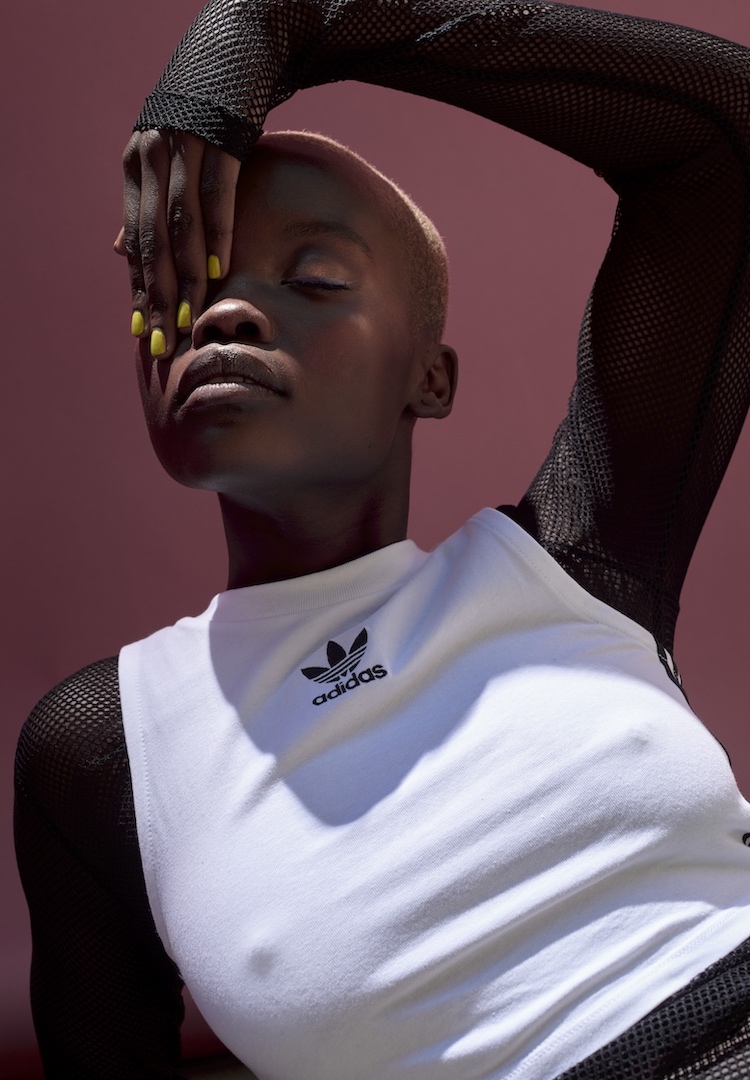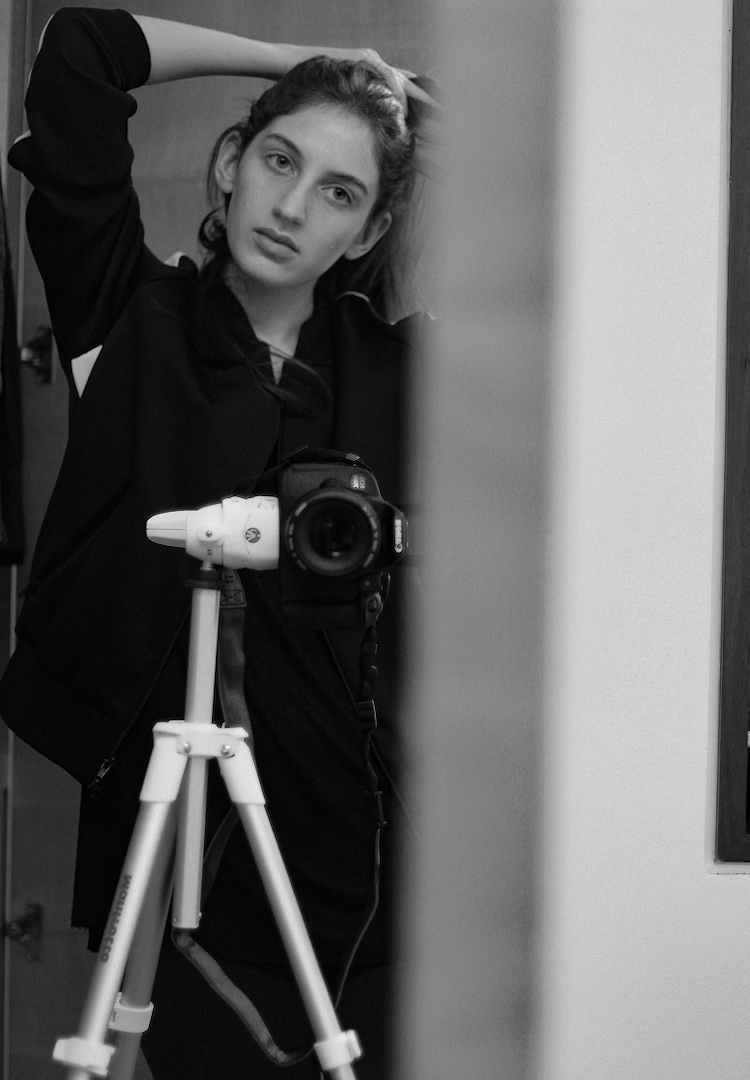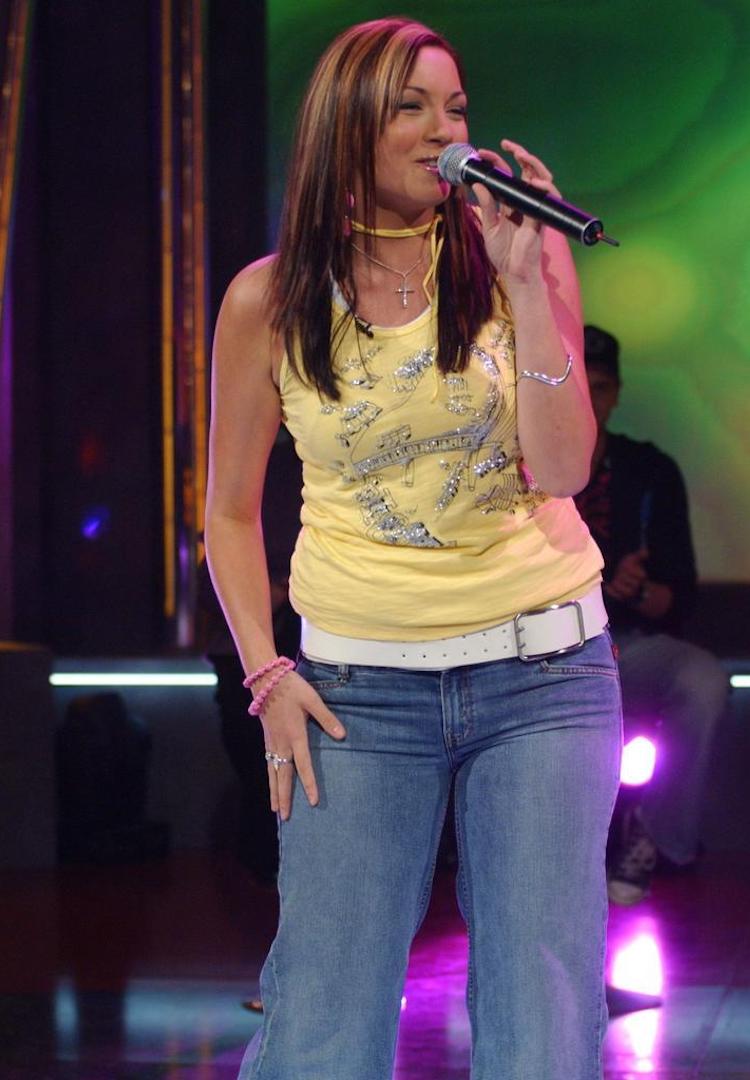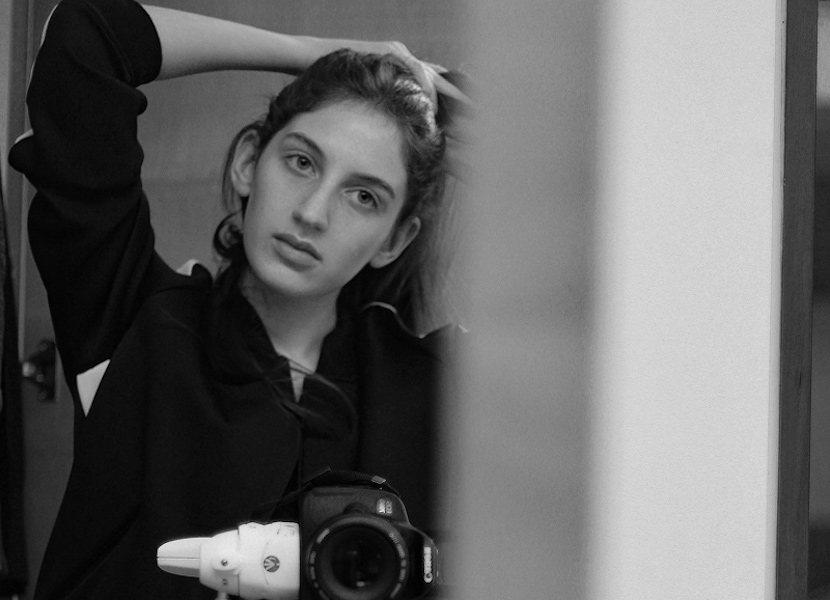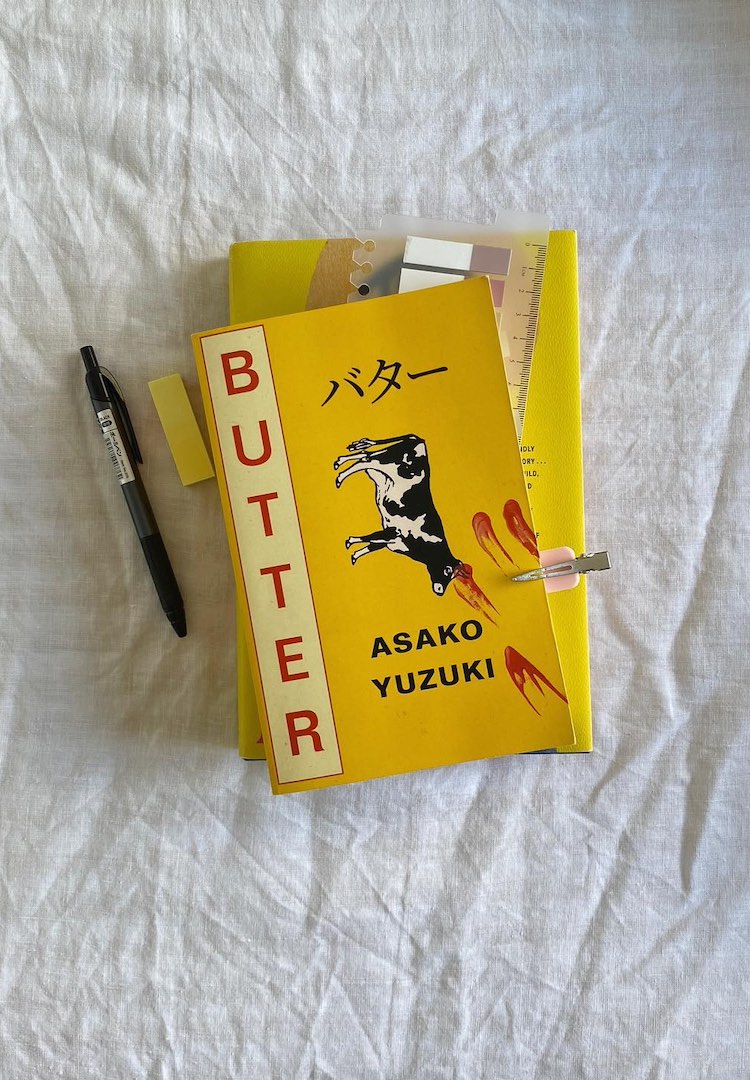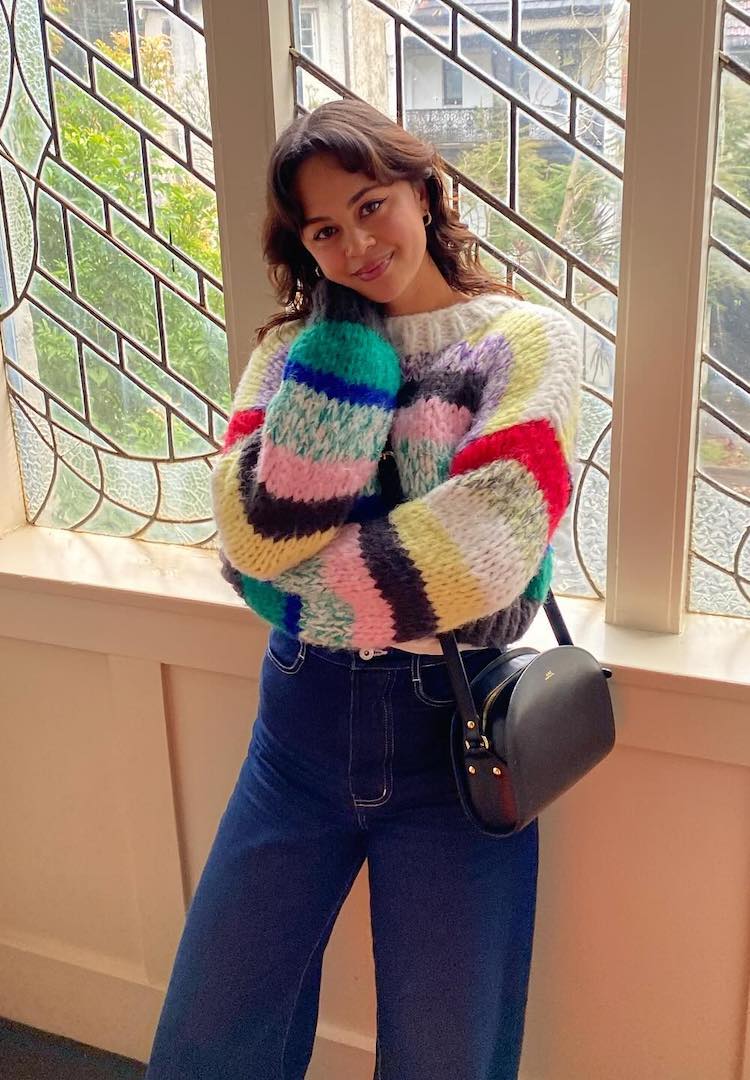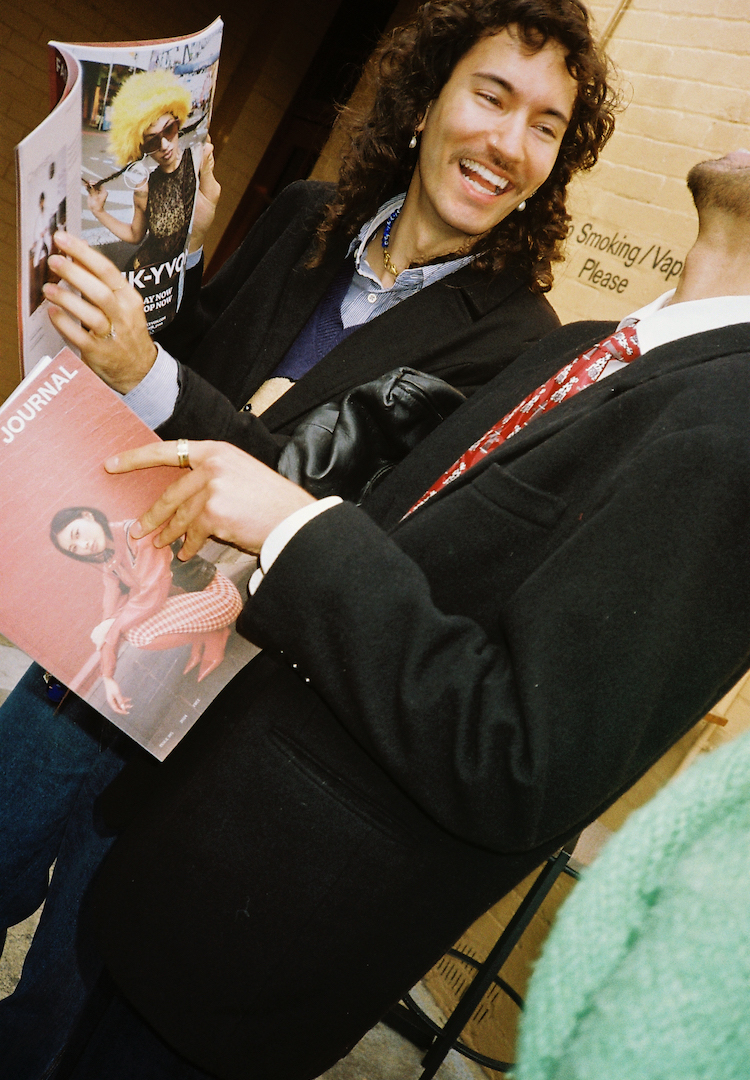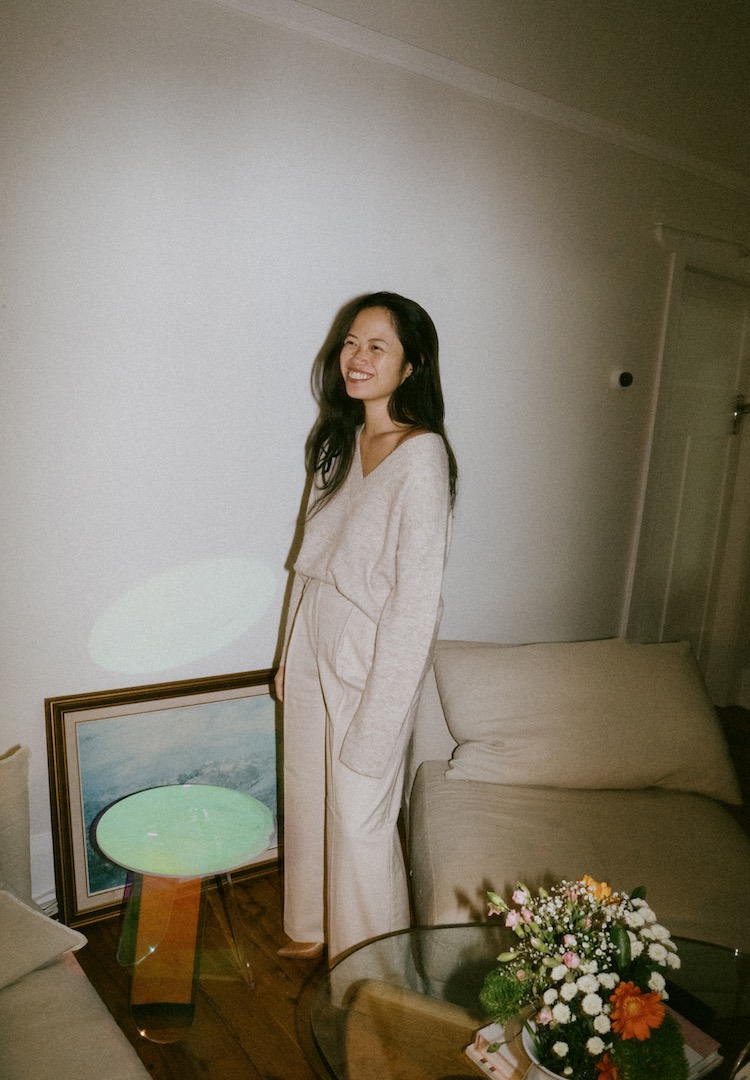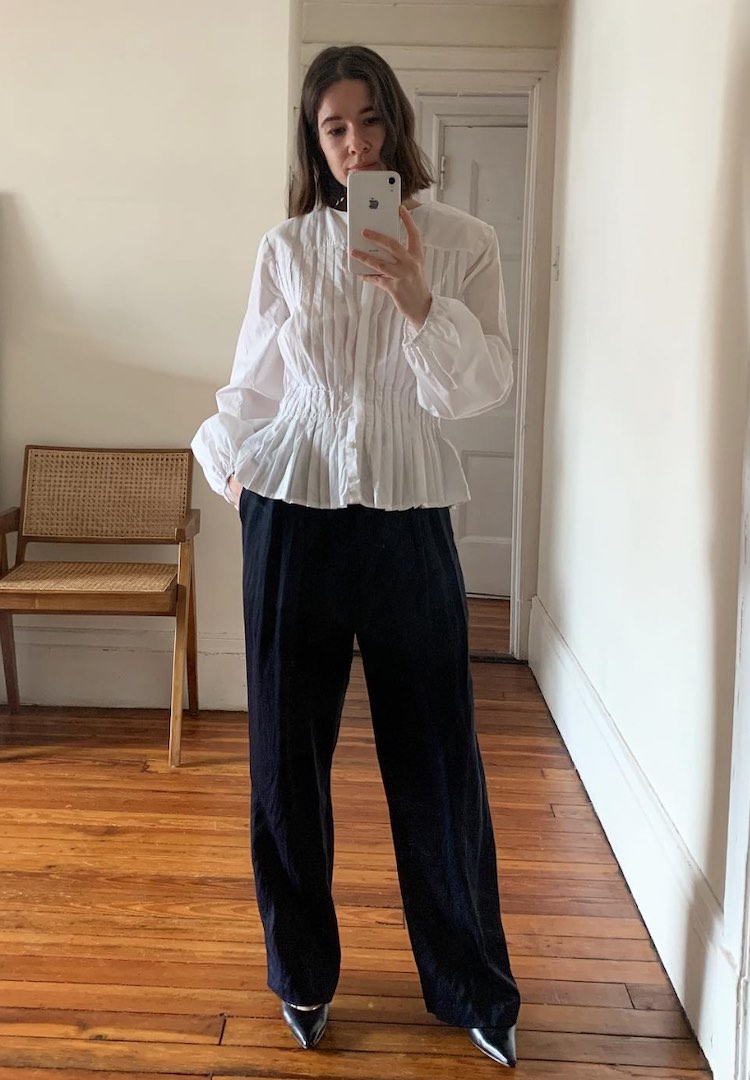How I Got Here: Vogue Australia’s fashion features writer on her non-traditional route into the industry
PHOTOGRAPHY BY RACHEL YABSLEY
WORDS BY CAIT EMMA BURKE
“Remain open-minded; you never know where a random connection or an unrelated job may lead.”
Have you ever stalked someone on LinkedIn and wondered how on earth they managed to land that wildly impressive job? While the internet and social media might have us believe that our ideal job is a mere pipe dream, the individuals who have these jobs were, believe it or not, in the same position once, fantasising over someone else’s seemingly unattainable job.
But behind the awe-inspiring titles and the fancy work events lies a heck of a lot of hard work. So what lessons have been learnt and what skills have proved invaluable in getting them from daydreaming about success to actually being at the top of their industry?
Welcome to How I Got Here, where we talk to women who are killing it in their respective fields about how they landed their awe-inspiring jobs, exploring the peaks and pits, the failures and the wins, and most importantly the knowledge, advice and practical tips they’ve gleaned along the way.
This week, Vogue Australia’s fashion features writer, Jen Nurick, tells us how working in the fashion industry went from being an unattainable dream to her everyday reality. With no connections and little knowledge of how the industry functioned, Jen studied a Bachelor of Arts at the University of Sydney and interned at Marie Claire on the side.
After eight months of learning the ins and outs of the fashion cupboard at Marie Claire, she landed a much-coveted internship at Vogue Australia. She interned at Vogue for two years, but as her studies drew to a close, she realised the permanent position she longed for was not going to materialise (yet).
Recognising this disappointment provided her with the freedom to try something completely new, she undertook a Masters of Philosophy at the University of Cambridge, writing regularly for the university newspaper and honing her voice as a writer and content creator.
Following her return to Australia, she landed her job at Vogue. Rather than hindering her career, her non-traditional studies – philosophy, gender studies and film – and lack of journalism training allowed Jen to differentiate herself from others in the industry, and provided her with a unique lens to see the fashion world through.
Remaining open-minded when things don’t go as planned, and making the most of every opportunity that comes her way have both been essential to Jen’s success and make her incredibly skilled at what she does. Here’s what she’s learnt along the way.
What do you do and what’s your official job title?
I am the fashion features writer at Vogue Australia. This means I work closely with fashion features director Alice Birrell, to write, research, interview and produce fashion features for our print magazine. I also work online with our digital team to create content for vogue.com.au.
Take us back to when you were first starting out. Did you study to get into your chosen field, or did you start out with an internship/entry-level role and climb the ladder? Tell us the story.
Working in fashion always felt like a lofty, faraway dream. I was that twenty-something who stood outside of fashion week shows in Paris and New York in the dead of winter to get a glimpse inside. Before Vogue, I had no connections, little knowledge of how the industry worked and no clear path to get inside it.
So, instead, I completed a Bachelor of Arts at the University of Sydney, where I majored in gender studies and film studies. These seemed utterly disconnected from the fashion world at the time (think feminist art history classes and crude animated films), but in reality, gave me an amazing grounding once I got in the door. Soon after starting classes, I landed an internship at Marie Claire where I familiarised myself with the insides of the fashion cupboard for eight months. Shortly after, I landed an editorial internship at Vogue.
Fast-forward to my final semester at university – by then, I’d interned at Vogue for just shy of two years – and I held out in the hopes of getting a job but unfortunately, it wasn’t my time. I shifted focus, pressed refresh on my future plans and applied to complete a Masters of Philosophy at the University of Cambridge. This was a blessing in hindsight: with nothing to lose, I applied myself to something I never dreamed I could have done.
While there, I wrote regularly for the university’s fashion column in its newspaper, Varsity, pitching ideas and beginning to recognise the areas in fashion where my interests – gender, tech, film, art, photography – coalesced. I kept in touch with the Vogue team while abroad and serendipitously, just as I returned home, a position became available.
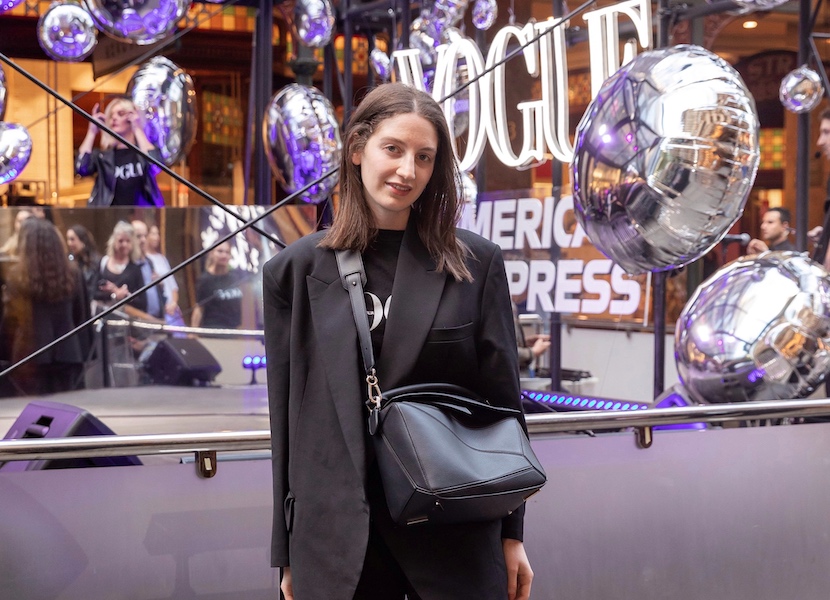
What challenges/hurdles have you faced getting to where you are now? Can you tell us about one in particular?
The realisation that there was no position in sight for me at Vogue when I finished my undergraduate degree was difficult to swallow. I felt like I had put in so many hours during my internship to prove myself and I was convinced that this was the dream job – the only job – for me. Pressing reset and figuring out a plan B, which in my case, involved moving abroad to a foreign city where I knew no one and undertaking a master’s degree in one of the most competitive academic environments [which] was incredibly challenging, but it positioned me well to take on a role at Vogue once it became available.
What do you want people to know about your industry/your role?
There is an incredible amount of behind-the-scenes work that goes into every single page that we print. Working in fashion can often induce an eye roll or two, because on the surface, it may look like editors spend their time socialising at events and taking in fashion shows. In reality, we are desk-bound most of the day, workshopping ideas and writing features. For outsiders, I also think it’s important to debunk the myth that fashion is fickle. What we wear holds up a mirror to our world, which lends itself to diverse and often challenging conversations that stretch across time and disciplines, from mental health, to economic downturns, to sustainability and innovation.
What’s the best part about your role?
The best part of my role is getting to meet and speak with so many incredible creatives, designers, thinkers and makers. My mind is constantly being stretched in every interview and conversation that I have; I find each of these recharges me. Given we’re a small team, it also means I am regularly writing about subject matter outside of fashion, which calls for crisscrossing between disciplines and always being stimulated by something new. I also find it incredibly exciting to uncover new talent and watch as the rest of the world catches on.
What would surprise people about your role?
That it is and it isn’t like The Devil Wears Prada. We all engage with fashion because it looks and feels so effortless and glamorous, but an untold sum of effort, hours and energy performing both (un)glamorous tasks is expended to give off the appearance of effortless glamour with aplomb. People may also be surprised that one feature or cover shoot passes through many hands – no editor can do their job without the support of a team.
What skills have served you well in your industry?
I think my nontraditional studies have served me well in fashion. I am not a trained journalist and I didn’t attend fashion school but choosing the path less travelled has helped me to differentiate myself from others. Crazy as it may seem now, no one knew what gender studies was when I started my degree. That was advantageous for me because there was important – and growing – ground that Vogue needed to address, and I was uniquely qualified to do so. To this day, my writing is filtered through a unique lens coloured by my film, art history and gender background. It also means I’m learning every day on the job as I play catch-up on journalism dos and don’ts, interview etiquette and the goings-on of magazines, and it’s all new and exciting.
What advice would you give to someone who wants to be in a role like yours one day?
There is no clear-cut path to secure a job in fashion which makes the journey equal parts terrifying and exciting. For this reason, I’d advise anyone who wants to pursue a career in fashion to remain open-minded; you never know where a random connection or an unrelated job may lead. I think it’s also useful to actively commit yourself to the interests and skills you’ll eventually utilise at work.
Even now, I write, shoot and produce content for my own website, jennurick.com and have spent years freelancing for clients in and outside of fashion. This means I’m building up my writing muscle all the time, cultivating a unique point of view and voice, and opening myself up to the possibility that the right eyeballs land on my work. Also, nurture your relationships – even those you meet at the bottom when you’re working up to the top floor. A good example is the interns you work with, they should never be underestimated and you can learn a lot from each other.
What about a practical tip?
I think keeping one’s options open and having a plan B or C is really useful. Before I landed my job at Vogue, I was hyper-focused on getting it, but I welcomed the opportunities that presented themselves on the way when things didn’t go to plan. Every experience is filled with learnings and these will better prepare you for when the right time meets the right opportunity. Also, don’t be afraid to ask questions. Proving your competence should not come at the cost of doing something wrong because you were afraid to ask how it is done right. Finally, remember to enjoy yourself on the job and embrace your wins, big or small.
Read the rest of the How I Got Here series here.
Looking to step up to a career in fashion? Each week we send a wrap of industry jobs straight to your inbox. Enter your details below and we’ll keep you in the loop, or browse current openings here.

